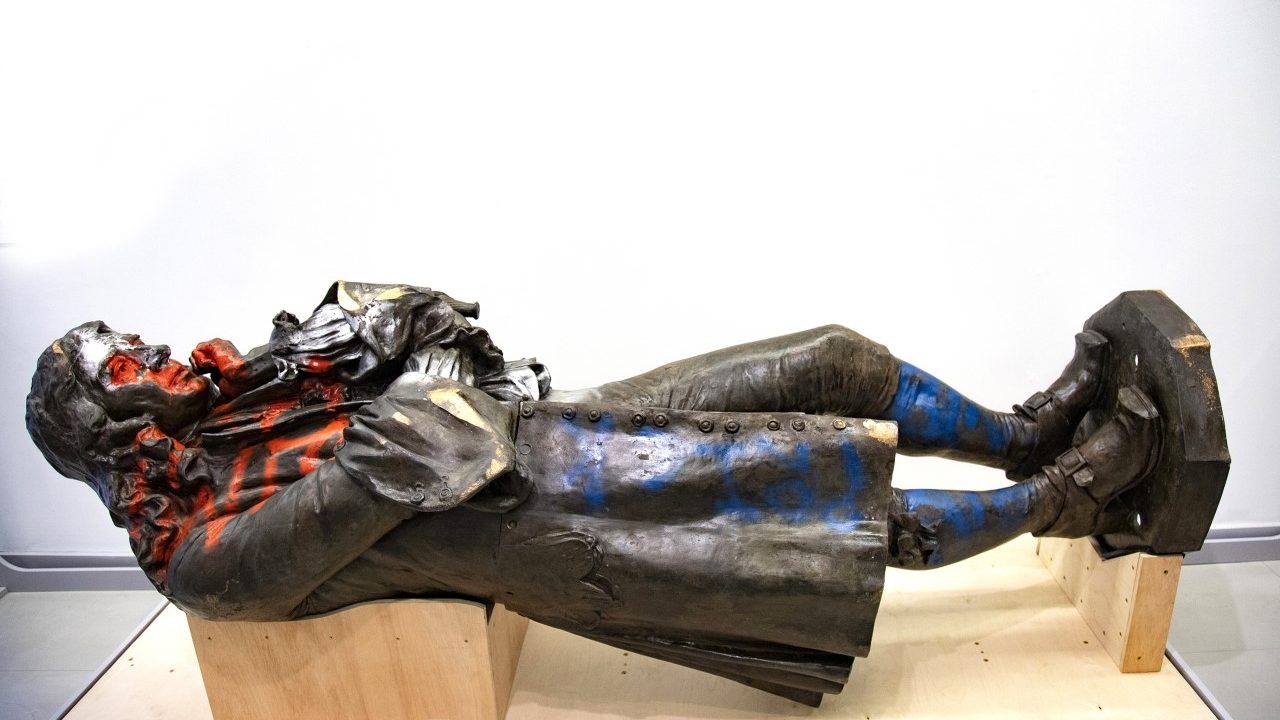No longer standing tall
Dan Smart, Bristol North Socialist Party
A current exhibition asks: “What next for the statue of slave trader, Edward Colston?” A year after the battered and graffiti-covered statue was hoisted out of the River Avon, it now lies supine – and still toppled – in a harbourside museum.
The exhibition tells us of the major role Colston played in enslaving 84,000 African people, including 12,000 children. 19,000 of them died on their journey across the Atlantic. Colston was a high official in the Royal African Company, which had the monopoly on transatlantic traffic of enslaved Africans.
In later life Colston campaigned, as a Bristol MP, to keep the slave trade legal. So much for his philanthropic endeavours! In fact, as is acknowledged in the exhibition, he was “reinvented as a patriarchal role model and an emblem of charity”, by the elite of the city, “in response to increasing class divisions.”
The battles around the fate of the Colston statue went on for decades prior to its downfall. It was eventually agreed that the plaque on the statue should be changed to more accurately reflect his role. But, after debates in 2018-2019, it could not be agreed what should be written, and no changes were made.
At the end of the exhibition, visitors are encouraged to put forward their views on what the future should be for Colston. What is certain is that he will no longer stand tall, overlooking the centre of Bristol. After years and years of handwringing, thousands of protesters put an end to that in a matter of minutes.
- The ‘What next for the statue of slave trader, Edward Colston?’ exhibition in Mshed in Bristol until 5 September








